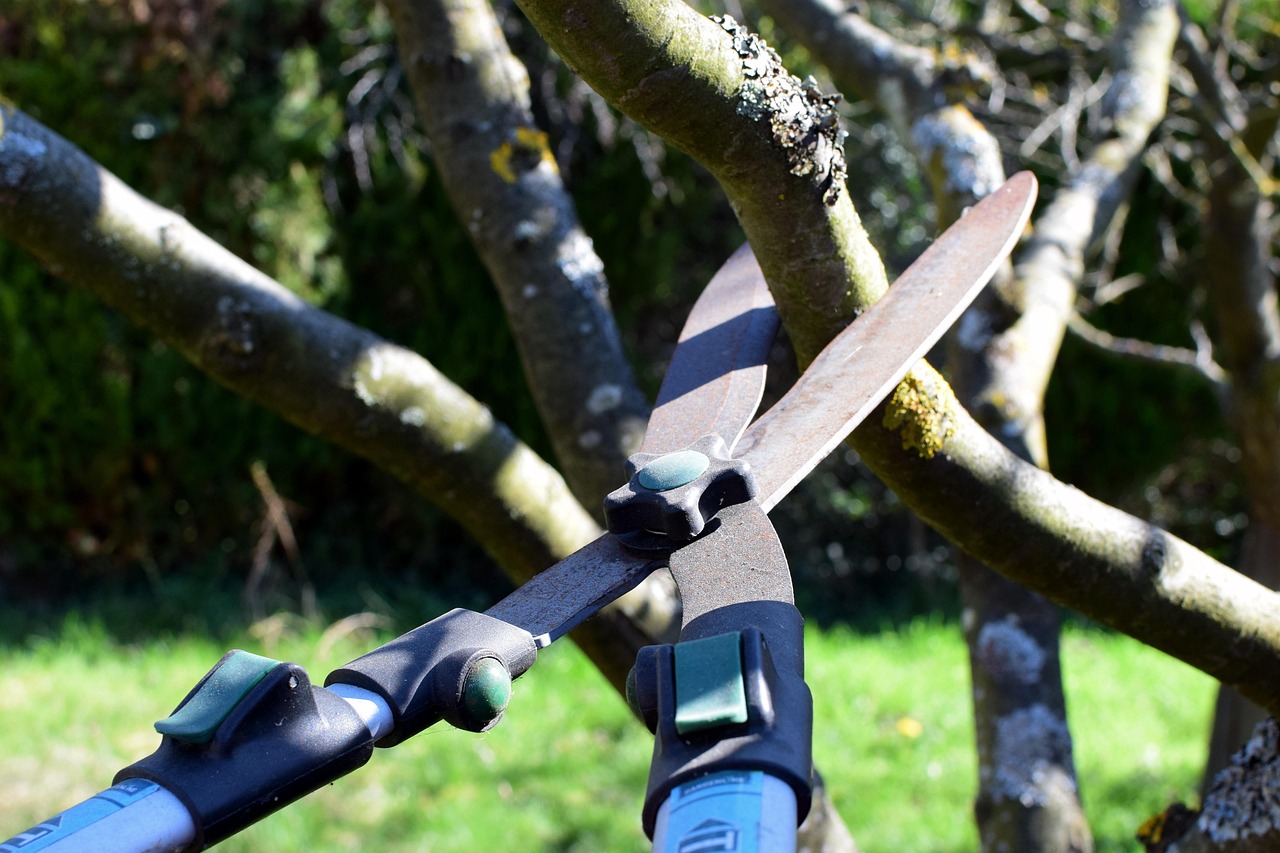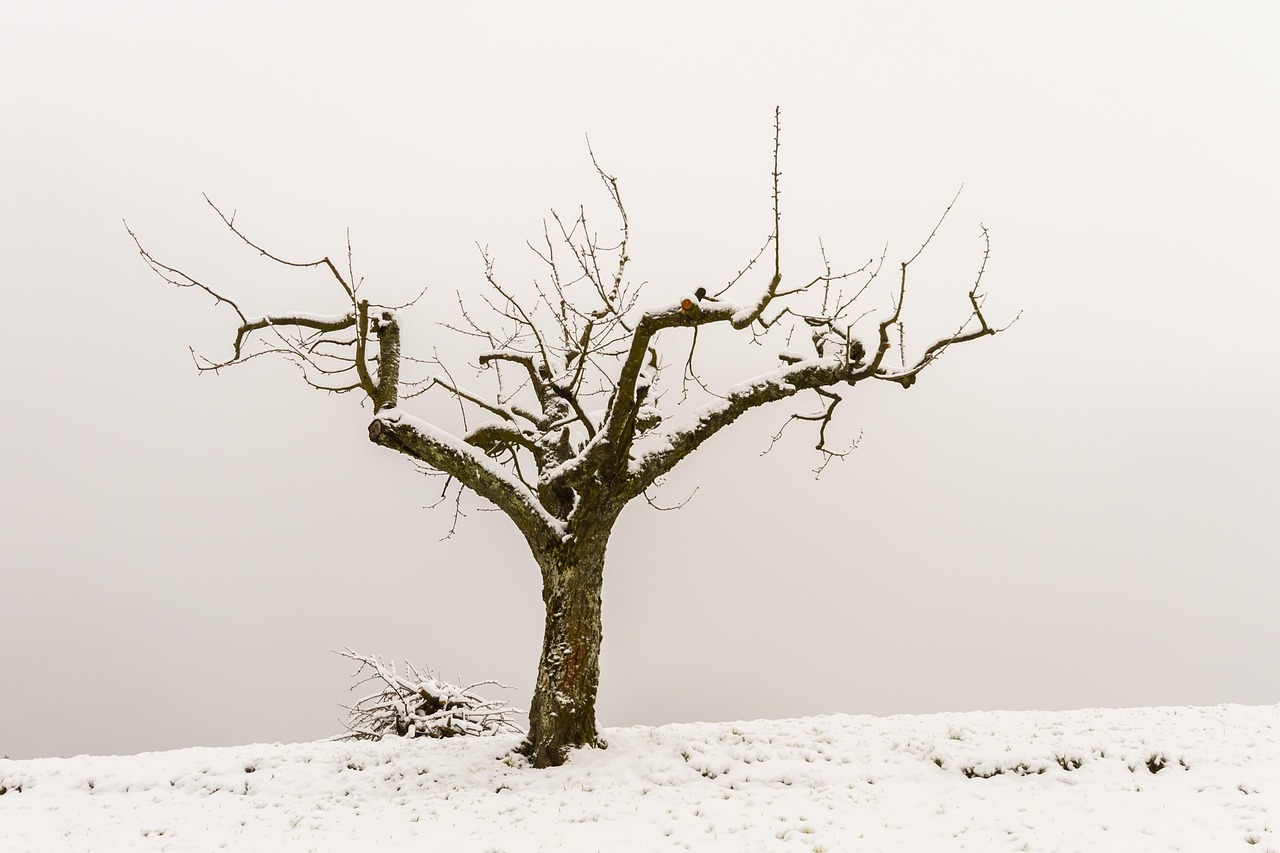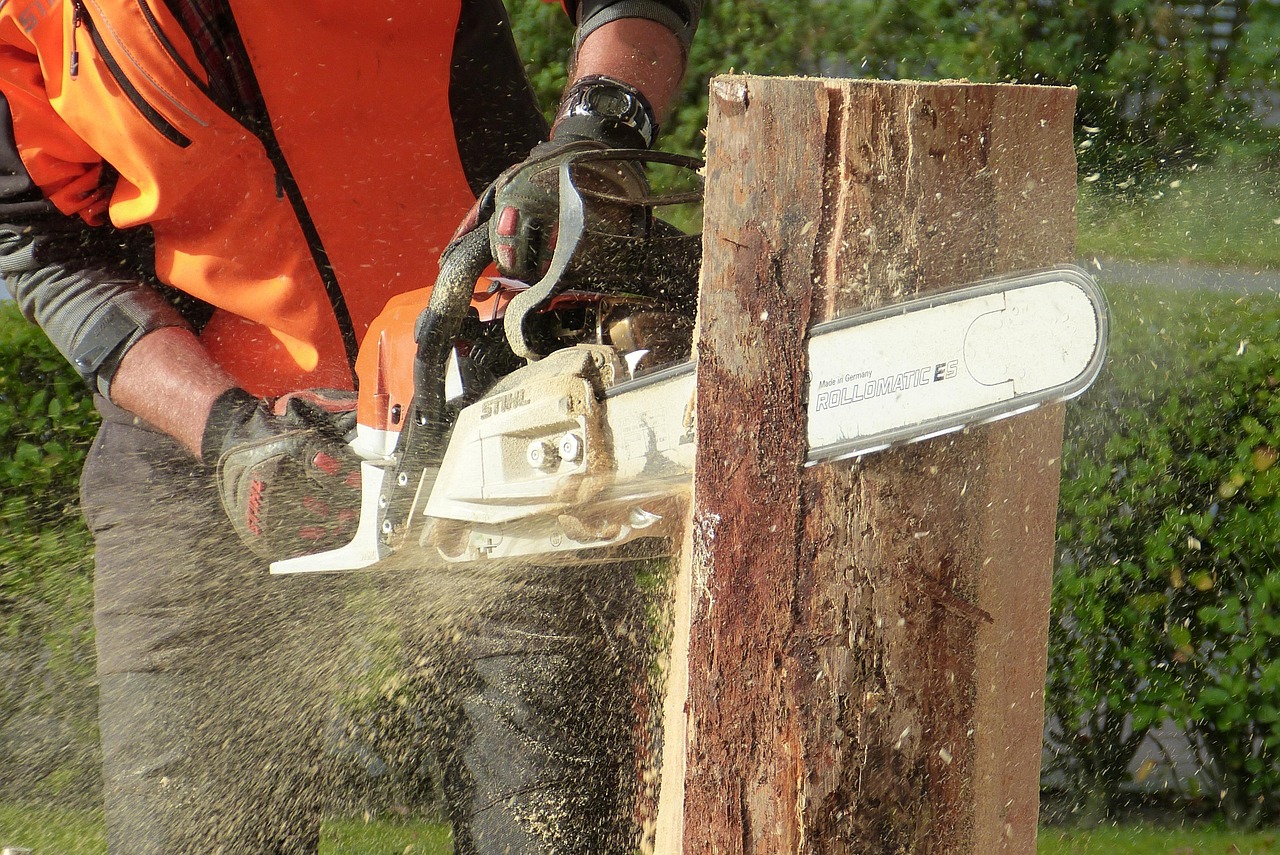Tree pruning around garden statues is essential for maintaining the aesthetic appeal and health of both the trees and the statues. Proper pruning techniques will ensure that the trees do not overshadow the statues while promoting better growth and preventing damage.
Garden statues can enhance the beauty of outdoor spaces. They serve as focal points in gardens, parks, and yards. However, surrounding trees can sometimes detract from their visual impact. When trees grow too close to statues, they may block views or even cause physical damage. Effective tree pruning is crucial in this regard.

Pruning involves selectively removing parts of a tree, such as branches or roots. This practice not only shapes the tree but also promotes healthy growth. For trees near garden statues, pruning is particularly important for several reasons:
- Visibility: Pruning helps maintain clear lines of sight to the statue, enhancing its presence in the garden.
- Health: Removing dead or overgrown branches prevents disease and encourages healthier tree growth.
- Safety: Proper pruning reduces the risk of branches damaging the statue during storms or high winds.
Understanding Tree Growth and Pruning Techniques
To effectively prune trees around garden statues, it is important to understand how trees grow. Trees have a natural tendency to reach for sunlight. This can lead to branches growing toward nearby structures, including statues. By knowing the growth patterns, gardeners can make informed decisions about how and when to prune.
There are several common pruning techniques that can be applied. These include:

- Thinning: This technique involves removing branches to increase light penetration and air circulation within the tree.
- Heading Back: Cutting back the tips of branches encourages bushier growth and can help maintain a desired shape.
- Reduction: This method reduces the overall size of the tree while maintaining its natural form.
Each technique serves a different purpose and may be used based on the specific situation surrounding the garden statue. It is crucial to choose the right technique to ensure that both the tree and statue coexist harmoniously.
The Best Time to Prune
The timing of pruning can significantly affect its success. Generally, late winter or early spring is considered the best time for most trees. During this period, trees are still dormant, which minimizes stress. Pruning at this time also encourages robust growth once the growing season begins.
However, some trees may require different timing based on their species. For instance:

| Tree Species | Best Pruning Time |
|---|---|
| Maple | Late Winter |
| Oak | Late Summer |
| Pine | Early Spring |
Understanding these specifics will help in managing the health of the trees while ensuring that they do not detract from the beauty of garden statues. Additionally, regular maintenance is recommended to keep both elements looking their best.
Tools Needed for Pruning
Having the right tools is essential for effective pruning. Here are some commonly used tools:
- Pruning Shears: Ideal for cutting small branches and maintaining delicate shapes.
- Loppers: Useful for thicker branches that are beyond the reach of pruning shears.
- Saw: Required for larger branches that need to be removed.
A good pair of gloves and safety goggles are also recommended for personal protection while pruning. Using sharp tools ensures clean cuts, which are critical for preventing disease and promoting healing.

In summary, understanding tree growth patterns, employing appropriate pruning techniques, timing your efforts correctly, and using the right tools are all vital components in maintaining a beautiful garden space that features both trees and statues. Each of these factors plays a role in ensuring that your garden remains visually appealing and healthy.
Recognizing Signs of Overgrowth
Identifying when trees need pruning is crucial for maintaining the beauty of garden statues and the overall landscape. Overgrown trees can overshadow statues, reduce their visibility, and create an unkempt appearance. Recognizing the signs of overgrowth is the first step in effective tree management.
Here are some common indicators that a tree requires pruning:
- Excessive Leaf Growth: If a tree has grown so many leaves that it blocks the view of nearby statues, it is time to consider pruning.
- Dead or Dying Branches: Branches that are brown, brittle, or lack foliage should be addressed promptly to prevent them from falling and damaging statues.
- Overlapping Branches: When branches cross each other, they can create friction that leads to damage. This should be corrected through careful pruning.
- Pests or Disease Signs: Any signs of pests or disease can indicate a need for pruning to protect both the tree and surrounding elements.
Pruning Techniques Specific to Statues
Pruning trees around garden statues requires specific techniques to ensure that the beauty of both elements is preserved. Different strategies can be employed based on the proximity of the statue and the tree species.
Crowning
Crowning involves shaping the top of the tree to maintain a balanced appearance. This technique is particularly useful for trees near statues, as it can help keep the tree from overshadowing the statue.
Directional Pruning
This technique focuses on training branches to grow away from the statue. By selectively removing branches that lean towards the statue, gardeners can create a more open space. It is essential to make cuts at appropriate angles to encourage new growth in the desired direction.
Seasonal Considerations for Pruning
Understanding seasonal changes is vital for effective pruning. Trees may respond differently based on the season, which affects their growth patterns and health. The following table summarizes seasonal considerations for tree pruning:
| Season | Pruning Actions | Considerations |
|---|---|---|
| Spring | Light pruning to remove deadwood | Avoid heavy pruning as it may stress new growth. |
| Summer | Shape and thin out excess growth | Monitor for pests and disease during this active growth phase. |
| Fall | Prepare trees for winter with minimal pruning | Avoid major cuts as trees begin to go dormant. |
| Winter | Best time for heavy pruning and shaping | Ideal for most trees as they are dormant and less stressed. |
Safety Precautions While Pruning
Pruning can pose risks if not conducted safely. Here are essential safety precautions to follow:
- Wear Protective Gear: Always wear gloves, safety goggles, and a hard hat if working with larger trees.
- Use Proper Ladder Safety: Ensure ladders are stable and positioned correctly when reaching higher branches.
- Be Aware of Surroundings: Check for nearby power lines and other hazards before starting to prune.
- Stay Hydrated: Pruning can be physically demanding, especially in warm weather. Drink plenty of water.
The Role of Mulching After Pruning
After pruning, mulching can play a significant role in promoting tree health. Mulch helps retain moisture in the soil, suppress weeds, and improve soil conditions. Applying mulch around the base of trees can benefit both the trees and nearby garden statues by creating a healthier environment.
Selecting the right type of mulch is important. Organic mulches such as wood chips or shredded bark are excellent choices as they break down over time, enriching the soil. Be sure to apply mulch in a way that does not touch the trunk of the tree, preventing rot.
The Importance of Regular Maintenance
Regular maintenance is vital for ensuring that trees remain healthy and statues continue to stand out. Establishing a pruning schedule can help manage growth effectively. For instance, conducting light maintenance twice a year may be sufficient for many types of trees.
A regular inspection schedule allows gardeners to identify potential issues early on. Observing changes in tree growth or health can guide necessary actions to support both trees and garden statues in thriving together.
Incorporating these practices will not only enhance the beauty of your outdoor space but also create an environment where both trees and statues coexist in harmony.
Choosing the Right Trees for Garden Statues
Selecting the appropriate trees to plant around garden statues is an important decision. The wrong choice can lead to excessive overgrowth, overshadowing the statue, and requiring more frequent pruning. Here are some factors to consider when choosing trees:
- Growth Rate: Fast-growing trees may need more frequent maintenance. Consider slower-growing species that require less pruning.
- Size at Maturity: Choose trees that complement the scale of the statue. Larger statues may require taller trees, while smaller statues can be surrounded by more compact varieties.
- Root Structure: Some trees have invasive root systems that may damage nearby structures or statues. Select species with non-invasive roots for safer planting.
- Seasonal Interest: Consider trees that provide year-round beauty, such as those with colorful foliage, flowers, or interesting bark.
Recommended Tree Species for Pruning Around Statues
Here are some recommended tree species that are generally suitable for planting near garden statues, along with their benefits:
| Tree Species | Benefits | Ideal Height |
|---|---|---|
| Japanese Maple | Beautiful foliage, slow growth | 10-25 feet |
| Crape Myrtle | Vibrant blooms, low maintenance | 10-30 feet |
| Dogwood | Seasonal flowers, moderate size | 15-30 feet |
| Redbud | Early spring flowers, heart-shaped leaves | 20-30 feet |
Creating a Pruning Schedule
A well-planned pruning schedule is essential for maintaining the health of trees around garden statues. It allows for timely interventions that can prevent overgrowth and ensure that both trees and statues remain in good condition. Here are some tips for establishing an effective pruning schedule:
- Assess Growth Rates: Determine how quickly the trees grow and adjust your pruning frequency accordingly. Fast-growing trees may need more frequent attention than slower-growing ones.
- Seasonal Checkpoints: Plan to inspect trees at least twice a year. Early spring and late summer are ideal times for assessing growth and making necessary cuts.
- Create a Checklist: Include specific tasks like removing dead branches, thinning out dense areas, and shaping the tree to maintain visibility of the statue.
- Document Changes: Keep a record of when and what you pruned. This information can help in planning future maintenance.
Impact of Weather on Pruning
The weather can greatly affect both the timing of pruning and the health of trees. Understanding how different weather conditions impact tree growth can help in planning effective pruning strategies. Here are some considerations:
- Rainy Conditions: Wet weather can create muddy conditions that make it difficult to prune safely. Aim to prune during dry periods to avoid damaging the soil.
- Cold Temperatures: Pruning during extreme cold can stress trees. Wait until temperatures are mild to ensure minimal shock to the tree.
- High Heat: Avoid pruning during extremely hot conditions, as this can lead to excessive stress on the tree.
- Windy Days: Windy conditions can make pruning unsafe, especially when using ladders or cutting larger branches.
Pest and Disease Management During Pruning
Pests and diseases can threaten both trees and garden statues if not managed properly. Regular inspections during your pruning schedule are crucial for identifying issues early on. Here are some strategies to manage pests and diseases effectively:
- Identify Common Pests: Familiarize yourself with pests that commonly affect your tree species. For example, aphids and spider mites can be prevalent in many trees.
- Look for Signs of Disease: Watch for yellowing leaves, wilting branches, or unusual spots that may indicate disease.
- Chemical Controls: If necessary, use appropriate pesticides or fungicides according to manufacturer instructions to control infestations.
- Natural Remedies: Consider organic solutions like neem oil or insecticidal soap as a safer alternative to chemicals.
The Aesthetic Balance Between Trees and Statues
The relationship between trees and garden statues should be harmonious, both functionally and aesthetically. Achieving this balance involves careful planning and ongoing maintenance. Here are some tips for enhancing the visual appeal of your garden:
- Positioning: Consider the placement of both the trees and statues. A well-thought-out layout allows each element to shine without overpowering one another.
- Color Coordination: Choose trees with foliage colors that complement the materials of the statue, creating a cohesive look.
- Layering Heights: Use a mix of tree heights to create depth in your garden design, allowing shorter plants or statues to be highlighted by taller trees.
This careful consideration not only enhances the beauty of your outdoor space but also ensures that both elements thrive in their environment.
Enhancing the Environment Around Garden Statues
In addition to aesthetic considerations, the environment surrounding garden statues can significantly influence the overall appeal of your outdoor space. To create an inviting atmosphere, consider these additional elements:
- Ground Cover: Use ground cover plants that complement the trees and statues. Native plants are often easier to maintain and can enhance the biodiversity of your garden.
- Pathways: Design pathways that lead to and from statues. This can create a natural flow in your garden layout, encouraging visitors to explore and appreciate both the trees and statues.
- Lighting: Incorporate soft lighting around the statue area. Uplights can highlight trees at night, while spotlights can draw attention to the statues, creating a magical ambiance.
- Water Features: Consider adding a small pond or fountain nearby. The sound of water can create a serene environment, enhancing the experience of viewing the art in your garden.
Each of these elements contributes to creating a tranquil and visually appealing garden space. By thoughtfully integrating trees, statues, and other features, you cultivate an environment that is both enjoyable and harmonious.
Community and Garden Spaces
Creating beautiful gardens with trees and statues can also foster community. Community gardens often feature artistic elements that reflect local culture and enhance the sense of belonging. In community spaces, tree pruning takes on added significance, as it promotes not only individual enjoyment but also collective appreciation. Here are some ways community gardens can benefit from thoughtful tree management:
- Educational Opportunities: Community gardens provide a platform for teaching residents about tree care and maintenance, promoting awareness of gardening practices.
- Shared Responsibilities: Residents can collaborate on pruning schedules and share knowledge, fostering a sense of camaraderie.
- Aesthetic Appeal: Well-maintained trees around shared statues enhance the beauty of communal spaces, attracting more visitors and participants.
Through collaboration and community engagement, tree pruning becomes a collective effort that enriches the neighborhood and strengthens community ties.
Final Thoughts
Maintaining the relationship between trees and garden statues requires careful consideration of growth patterns, pruning techniques, and aesthetic integration. By understanding the importance of tree management, selecting appropriate species, and establishing a consistent pruning schedule, gardeners can create beautiful outdoor environments that celebrate both nature and art.
Regular maintenance not only ensures healthy trees but also preserves the beauty of statues. The balance achieved between these elements results in a harmonious landscape that brings joy to all who experience it. As you cultivate your garden, remember that each tree and statue contributes to a larger story—one that reflects your personal style and enhances the beauty of your outdoor space.
The thoughtful integration of design elements, plant selection, and ongoing care will lead to a flourishing garden where both trees and statues thrive together. With these practices in place, you can enjoy a picturesque outdoor environment that remains vibrant for years to come.
